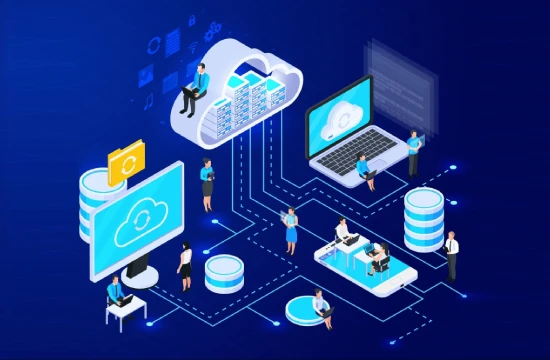What is Cloud Governance?
Cloud governance refers to the set of policies, processes, and tools that organizations use to manage their cloud computing environments effectively. As businesses increasingly adopt cloud technologies to store data, run applications, and scale operations, the need for structured oversight becomes critical. Cloud governance ensures that cloud resources are used securely, cost-effectively, and in alignment with organizational goals and regulatory requirements. It acts as a framework that balances flexibility with control, enabling companies to harness the power of the cloud while mitigating risks.
At its core, cloud governance addresses key areas such as security, compliance, cost management, and operational efficiency. For example, it establishes rules for who can access cloud resources, how data is encrypted, and what measures are in place to prevent unauthorized access. This is especially important in industries like healthcare or finance, where strict regulations such as HIPAA or GDPR dictate how data must be handled. By implementing governance policies, organizations can avoid costly breaches and ensure they remain compliant with legal standards.
Another critical aspect of cloud governance is cost optimization. Cloud services often operate on a pay-as-you-go model, which can lead to unexpected expenses if usage isn’t monitored. Governance frameworks include tools and policies to track spending, set budgets, and identify inefficiencies, such as unused resources or over-provisioned servers. This helps organizations maximize their return on investment and avoid budget overruns.
Cloud governance also involves defining roles and responsibilities within an organization. It ensures that IT teams, developers, and business units understand their obligations in managing cloud resources. For instance, governance might dictate how new cloud services are provisioned, who approves them, and how they are monitored over time. This clarity reduces confusion and prevents shadow IT—when employees use unapproved cloud services—enhancing overall security and accountability.
Unlike traditional IT governance, which focuses on on-premises infrastructure, cloud governance is tailored to the dynamic, scalable nature of cloud computing. It must account for multi-cloud or hybrid cloud environments, where organizations use a mix of public, private, and on-premises systems. This complexity requires governance frameworks to be adaptable, leveraging automation and cloud-native tools to enforce policies consistently across diverse platforms.
In essence, cloud governance is about creating a structured approach to cloud management that supports innovation while maintaining control. It empowers organizations to scale their cloud usage confidently, knowing that security, compliance, and cost-efficiency are prioritized. As cloud adoption continues to grow, understanding and implementing effective cloud governance becomes a cornerstone of modern business success.
Key Components of Cloud Governance
Cloud governance is built on several key components that work together to ensure a secure, compliant, and efficient cloud environment. These elements form the backbone of any effective governance framework, addressing the unique challenges of managing cloud resources. Below, we explore the critical components that organizations must consider when implementing cloud governance.
- Policies and Standards
The foundation of cloud governance lies in well-defined policies and standards. These rules outline how cloud resources should be used, who can access them, and what security measures must be in place. For example, policies might specify encryption requirements for sensitive data, acceptable use cases for cloud services, or protocols for provisioning new resources. By establishing clear guidelines, organizations ensure consistency and reduce the risk of misconfiguration or misuse. - Security and Risk Management
Security is a cornerstone of cloud governance, given the shared responsibility model of cloud computing. Governance frameworks include measures to protect data, applications, and infrastructure from threats. This involves implementing access controls, such as multi-factor authentication (MFA) and role-based access control (RBAC),as well as regular security audits and vulnerability assessments. Risk management also plays a role, identifying potential threats—like data breaches or service outages—and outlining mitigation strategies to minimize their impact. - Compliance and Regulatory Adherence
For organizations in regulated industries, compliance is a non-negotiable component of cloud governance. This involves aligning cloud usage with industry standards and legal requirements, such as GDPR, HIPAA, or PCI-DSS. Governance frameworks include tools and processes to monitor compliance, document adherence, and address any violations. Automated compliance checks and reporting mechanisms are often used to ensure ongoing alignment with regulatory obligations. - Cost Management and Optimization
Effective cloud governance requires careful oversight of costs. This component involves tracking cloud spending, setting budgets, and identifying opportunities for optimization. Tools like cost allocation tags, usage dashboards, and automated alerts help organizations monitor expenses in real time. Governance policies might also enforce rules to prevent waste, such as shutting down unused resources or selecting cost-effective service tiers, ensuring financial efficiency. - Monitoring and Automation
Continuous monitoring and automation are essential for maintaining governance in a dynamic cloud environment. Monitoring tools track resource usage, performance, and security events, providing visibility into the cloud infrastructure. Automation, meanwhile, enforces governance policies at scale—such as automatically applying security patches or deprovisioning inactive accounts. Together, these capabilities reduce manual oversight and ensure consistent policy enforcement. - Roles and Responsibilities
Clearly defined roles and responsibilities ensure accountability within the organization. This component outlines who is responsible for managing cloud resources, approving new services, and responding to incidents. For example, IT teams might oversee infrastructure, while business units handle application-specific governance. This clarity prevents overlap and ensures that governance is a shared effort across departments.
Cloud Governance vs Traditional IT Governance
As organizations increasingly adopt cloud technologies, understanding the differences between cloud governance and traditional IT governance becomes essential. While both frameworks aim to manage resources, ensure security, and align with business goals, they differ significantly in scope, approach, and application. Below, we explore how cloud governance diverges from traditional IT governance and why these distinctions matter in today’s digital landscape.
- Scope and Environment
Traditional IT governance focuses on managing on-premises infrastructure, such as physical servers, networks, and storage devices located within an organization’s data center. It operates in a controlled, static environment where resources are owned and maintained by the organization. In contrast, cloud governance oversees a dynamic, distributed environment where resources are hosted by third-party providers, such as AWS, Azure, or Google Cloud. This shift introduces complexities like multi-cloud and hybrid cloud setups, requiring governance to adapt to scalable, virtualized infrastructure. - Ownership and Responsibility
In traditional IT governance, organizations have full control over their hardware and software, bearing sole responsibility for security, maintenance, and compliance. Cloud governance operates under a shared responsibility model, where the cloud provider manages the underlying infrastructure (e.g., physical security, hardware maintenance),while the organization is responsible for securing its data, applications, and configurations. This division requires cloud governance to emphasize collaboration with providers and focus on areas like access controls and encryption. - Flexibility and Scalability
Traditional IT governance is often rigid, designed for fixed resources with long procurement cycles. Scaling infrastructure requires significant planning, budgeting, and physical upgrades. Cloud governance, however, is built for flexibility and scalability. Cloud resources can be provisioned or decommissioned instantly, allowing organizations to adapt to changing needs. Governance in the cloud must therefore include policies to manage rapid scaling, such as automated cost controls and resource allocation rules, to prevent sprawl and overspending. - Security and Compliance Approach
While both frameworks prioritize security and compliance, their approaches differ. Traditional IT governance relies on perimeter-based security, such as firewalls and physical access controls, to protect on-premises systems. Cloud governance shifts to a zero-trust model, emphasizing identity management, encryption, and continuous monitoring across distributed environments. Compliance in the cloud also requires aligning with provider-specific standards and leveraging tools like automated audits to meet regulations like GDPR or HIPAA. - Cost Management
Cost management in traditional IT governance focuses on capital expenditures (CapEx),such as purchasing hardware and software licenses upfront. Cloud governance shifts to an operational expenditure (OpEx) model, where costs are tied to usage and billed on a pay-as-you-go basis. This requires governance to include real-time cost monitoring, budget enforcement, and optimization strategies to avoid unexpected expenses. - Speed of Implementation
Traditional IT governance often involves slow, manual processes for provisioning resources and enforcing policies. Cloud governance leverages automation and cloud-native tools to implement policies quickly and at scale. For example, automated workflows can enforce security settings or shut down unused resources, enabling faster response times and greater efficiency.
Tools for Implementing Cloud Governance
Implementing cloud governance requires a combination of policies, processes, and specialized tools to ensure security, compliance, cost efficiency, and operational control. These tools help organizations enforce governance frameworks, automate tasks, and gain visibility into their cloud environments. Below, we explore the key types of tools used to implement cloud governance and how they contribute to a robust strategy.
- Cloud Management Platforms (CMPs)
Cloud management platforms, such as AWS Management Console, Microsoft Azure Portal, and Google Cloud Console, serve as centralized hubs for managing cloud resources. These tools allow organizations to monitor usage, configure security settings, and enforce governance policies across their cloud infrastructure. CMPs often include features like role-based access control (RBAC),cost tracking, and resource tagging, making them essential for overseeing multi-cloud or hybrid environments. - Cost Management Tools
Effective cloud governance relies heavily on controlling costs, and specialized cost management tools help achieve this goal. Tools like AWS Cost Explorer, Azure Cost Management, and third-party solutions such as CloudHealth or Cloudability provide detailed insights into cloud spending. They enable organizations to set budgets, track usage patterns, and identify cost-saving opportunities, such as shutting down unused resources or optimizing instance sizes. These tools ensure financial accountability, a critical aspect of governance. - Security and Compliance Tools
Security is a top priority in cloud governance, and tools like AWS GuardDuty, Azure Security Center, and Google Cloud Security Command Center help organizations protect their environments. These solutions offer threat detection, vulnerability assessments, and compliance monitoring, ensuring adherence to standards like GDPR, HIPAA, or PCI-DSS. Additionally, tools like HashiCorp Vault or AWS Key Management Service (KMS) manage encryption keys and secrets, enhancing data security and supporting governance policies. - Policy Enforcement and Automation Tools
Automation is key to scaling governance across dynamic cloud environments. Tools like AWS Config, Azure Policy, and Terraform allow organizations to define and enforce governance policies automatically. For example, AWS Config can monitor resource configurations for compliance, while Azure Policy can restrict the deployment of non-compliant services. Infrastructure-as-code tools like Terraform enable consistent provisioning aligned with governance rules, reducing manual errors and ensuring policy adherence. - Monitoring and Logging Tools
Continuous monitoring is essential for maintaining governance, and tools like AWS CloudWatch, Azure Monitor, and Google Cloud Operations Suite provide real-time visibility into cloud performance, security events, and resource usage. These tools generate logs and alerts, enabling organizations to detect anomalies, track policy violations, and respond to incidents promptly. Centralized logging solutions, such as Splunk or ELK Stack, can aggregate data from multiple cloud providers, enhancing oversight in multi-cloud setups. - Identity and Access Management (IAM) Tools
IAM tools, such as AWS IAM, Azure Active Directory, and Okta, are critical for controlling access to cloud resources. They allow organizations to implement least-privilege access, enforce multi-factor authentication (MFA),and manage user roles and permissions. By integrating IAM with governance policies, organizations can prevent unauthorized access and ensure accountability, a foundational element of cloud security.






